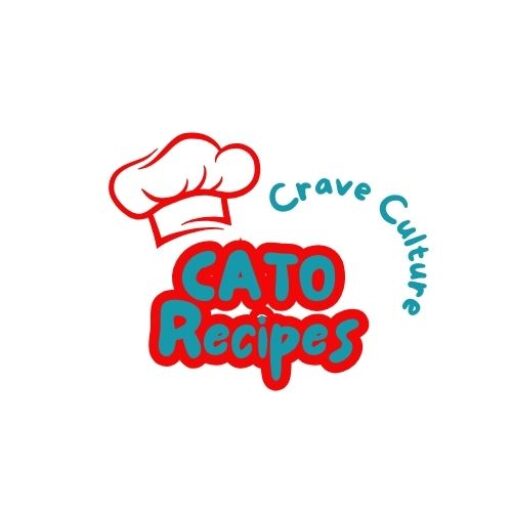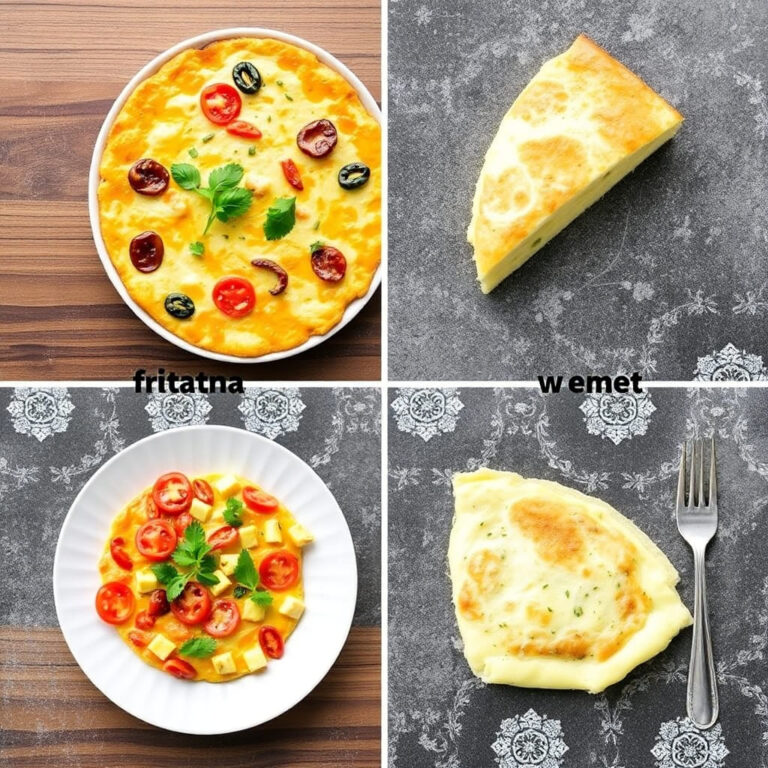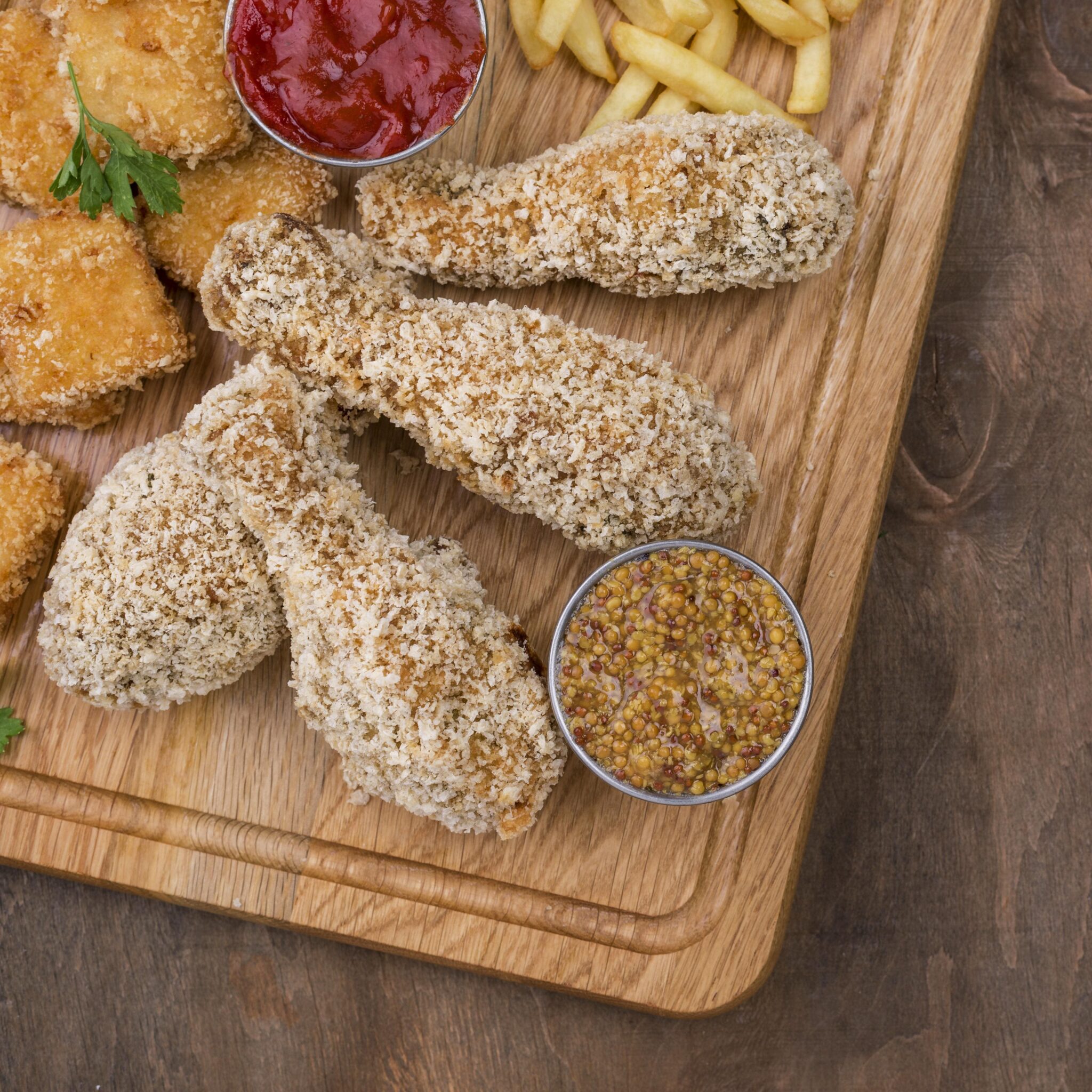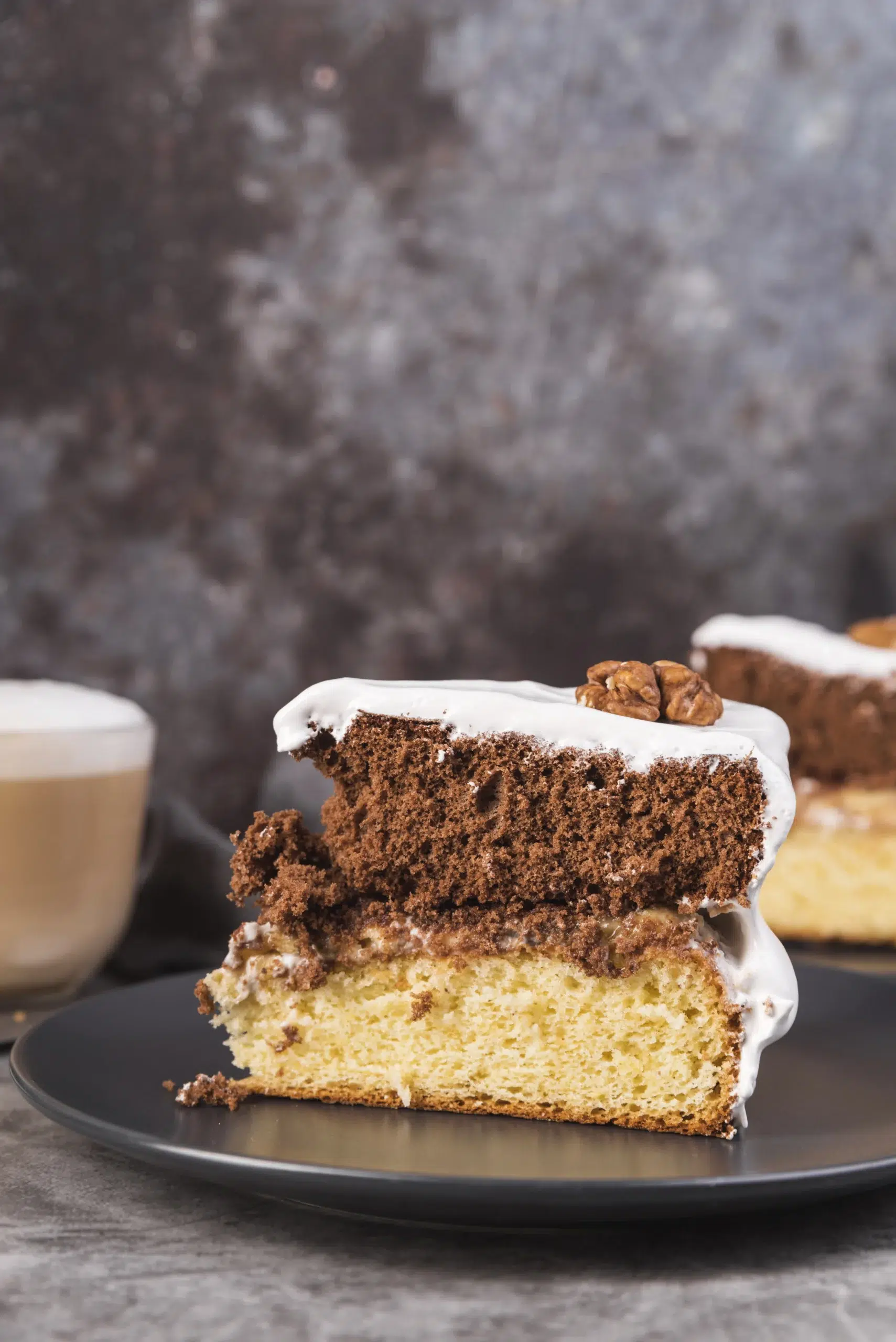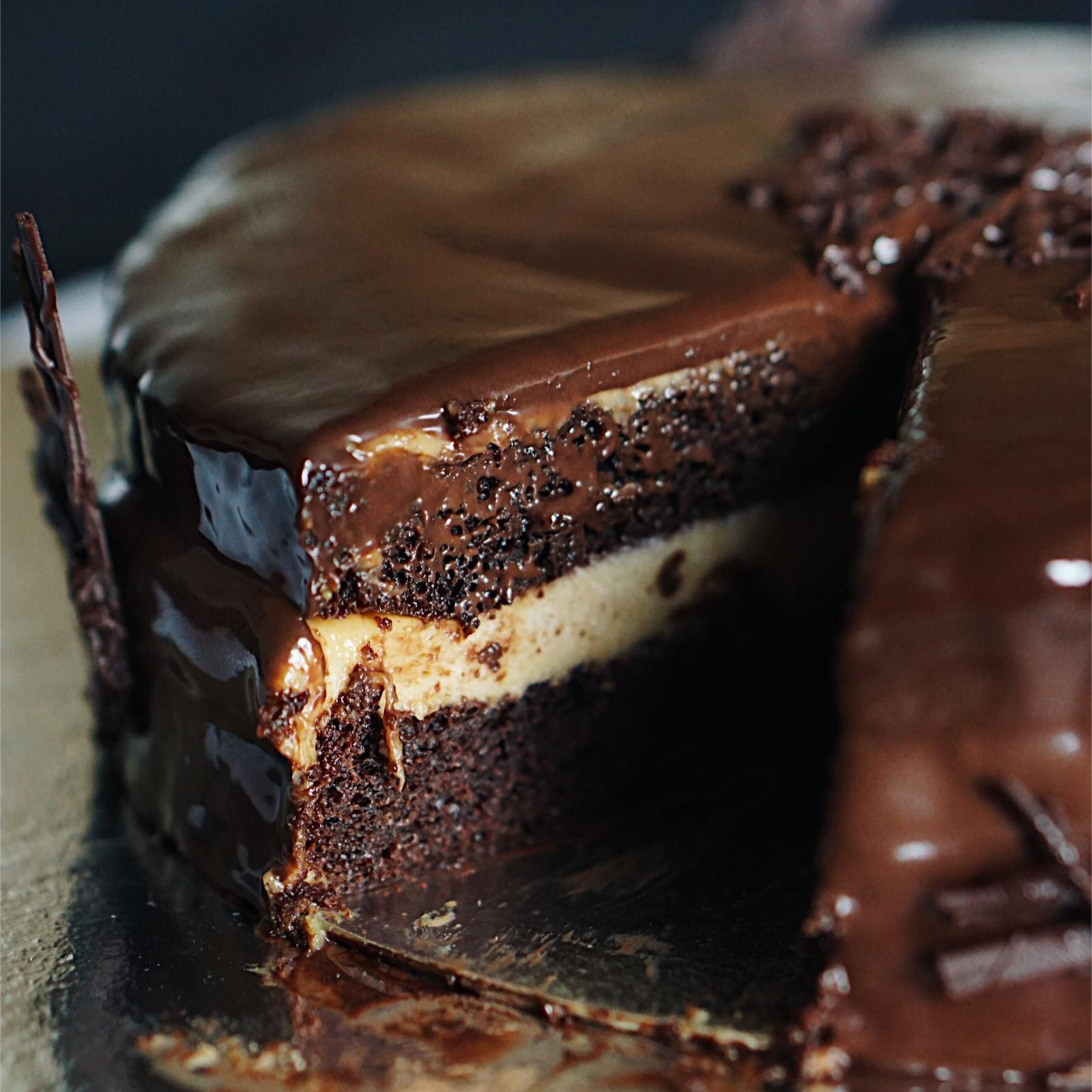Egg-based dishes are a staple in cuisines worldwide, celebrated for their versatility, simplicity, and nutritional value. Among the most popular are the frittata and the omelette. While they might seem similar at first glance, these two dishes differ significantly in their preparation, ingredients, and cultural significance. Whether you’re planning a leisurely brunch or a quick breakfast, understanding the differences between these dishes will help you choose the perfect option to suit your needs. In this blog, we’ll dive into the unique characteristics of frittatas and omelettes, from their cooking methods to their textures, and explore when to choose one over the other.
Table of Contents
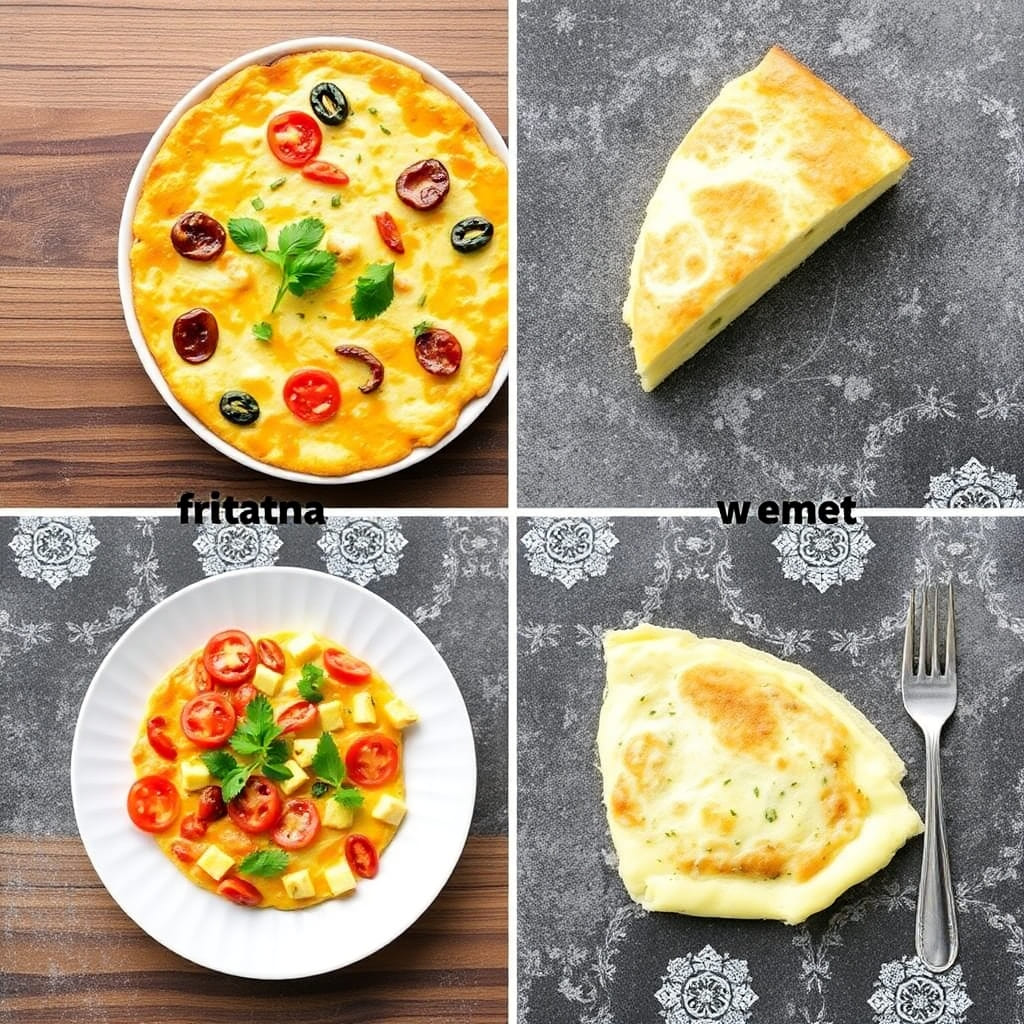
Understanding the Basics of Frittatas and Omelettes
To appreciate the differences between a frittata and an omelette, it’s essential to understand their individual characteristics, origins, and preparation styles.
What is a Frittata?
Overview of the Dish
A frittata is an Italian egg-based dish, often referred to as a crustless quiche. It’s designed to be hearty, versatile, and shareable, making it a popular choice for brunches, light dinners, or meal prep. The term “frittata” comes from the Italian word for “fried,” but its cooking technique involves both stovetop and oven preparation, setting it apart from other egg dishes.
Common Ingredients and Preparation
Frittatas are known for their rich, custard-like texture, achieved by blending eggs with milk or cream. Common ingredients include:
- Vegetables: Spinach, bell peppers, onions, and zucchini are popular choices.
- Proteins: Bacon, sausage, or even seafood can be added.
- Cheeses: Parmesan, mozzarella, feta, or ricotta contribute to the creaminess.
Preparation involves mixing these ingredients into the egg base before cooking. The mixture is partially cooked on the stovetop to set the bottom and edges, then transferred to the oven or broiler to ensure even cooking and a golden top. Once done, frittatas are sliced into wedges and served, making them ideal for multiple servings.
What is an Omelette?
Definition and Variations
An omelette is a classic egg dish, quick to prepare and highly customizable, found in many culinary traditions worldwide. Unlike the frittata, an omelette is a single-serving dish, often cooked entirely on the stovetop. Its defining feature is the folding or rolling technique, which encases the fillings inside a soft, fluffy egg layer.
Omelettes have countless variations depending on regional styles:
- French Omelette: A smooth, creamy, barely-cooked version folded with precision.
- American Omelette: Cooked until fully set and often browned, with fillings like cheese, ham, or mushrooms.
- Spanish Tortilla: A heartier, thicker version closer to a frittata, made with potatoes.
Key Ingredients and Cooking Techniques
Omelettes use fewer eggs per serving, often without additional cream or milk, making them thinner than frittatas. Common fillings include:
- Vegetables like peppers, onions, or tomatoes
- Proteins such as cheese, ham, or smoked salmon
Cooking an omelette involves heating a pan with butter or oil, pouring beaten eggs, and adding fillings before folding or rolling the egg over them. The cooking process is faster than a frittata, with high heat used to create a lightly browned exterior while keeping the interior soft.
Cooking Methods: How They Differ
The cooking techniques for frittatas and omelettes are one of the most noticeable distinctions between the two. From the equipment used to the heat applied, their preparation processes significantly influence their texture, flavor, and presentation.
Frittata Cooking Techniques
Stovetop to Oven Transition
Frittatas require a combination of stovetop and oven cooking to achieve their signature custardy texture. The process begins by lightly sautéing ingredients like vegetables, meats, or spices in a non-stick or oven-safe skillet on the stovetop. Once the fillings are partially cooked, the beaten egg mixture (often combined with milk or cream) is poured over them. The pan remains on the stovetop just long enough for the bottom and edges to set.
At this point, the pan transitions to the oven or under a broiler. This step allows the frittata to cook evenly from the top down, avoiding the risk of overcooking or burning the base. The gentle, consistent heat of the oven ensures a fluffy, slightly golden finish with evenly distributed ingredients.
Slow and Steady Heat Distribution
The hallmark of a frittata is its thick and custardy texture, which is achieved by cooking it at a lower temperature over a longer time. This slow process allows the eggs to set gradually without drying out. The result is a dish that is soft, creamy, and uniformly cooked throughout, often served in slices like a pie or cake.
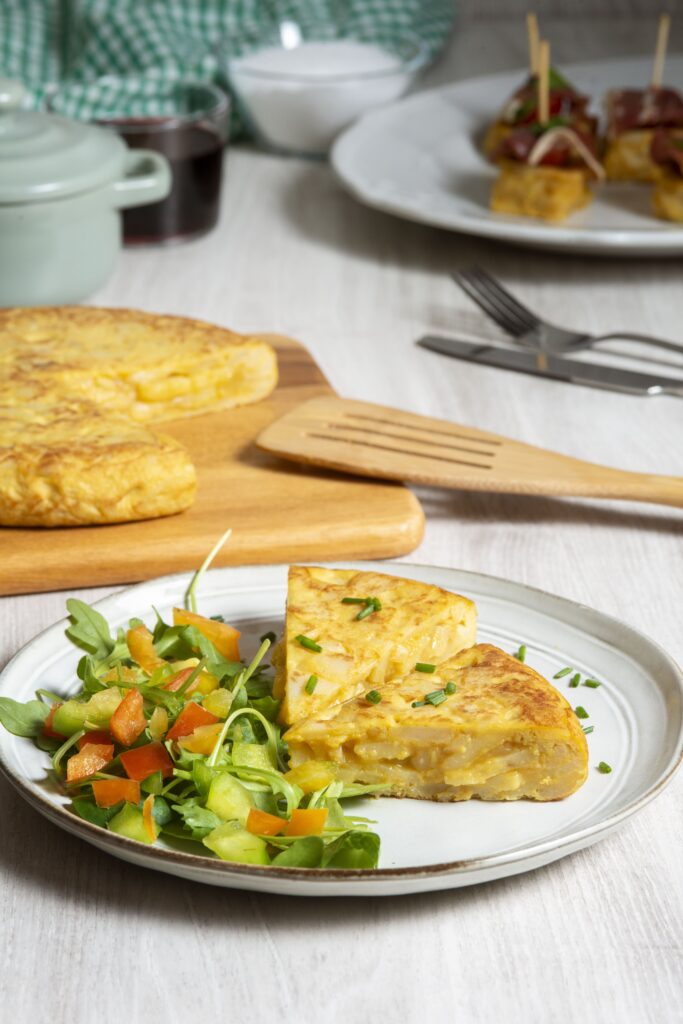
Omelette Cooking Techniques
Quick Stovetop Preparation
Unlike the frittata, an omelette is cooked entirely on the stovetop and is ready in a matter of minutes. The process starts by preheating a non-stick or well-seasoned skillet over medium to high heat. Beaten eggs are poured into the pan, where they begin to set almost immediately.
Fillings, such as cheese, meats, or vegetables, are added directly to the center of the egg layer. Once the edges of the omelette are firm and the center is slightly soft, the omelette is folded or rolled to encase the fillings. This quick method ensures the exterior is lightly cooked while the interior remains tender and slightly moist.
High Heat and Constant Movement
Omelettes rely on higher heat and a faster cooking time to achieve their characteristic light and fluffy texture. To prevent the eggs from sticking or overcooking, the pan is often tilted and swirled, and the eggs are gently stirred or lifted with a spatula. This technique creates a delicate balance, ensuring the eggs cook evenly without becoming rubbery.
The constant movement also helps maintain the signature smoothness and flexibility needed to fold or roll the omelette neatly. Depending on personal preference or cultural style, omelettes can be cooked just enough to remain slightly runny inside (as in a French omelette) or cooked through entirely (as in an American omelette).
Key Ingredients and Customization
One of the greatest appeals of both frittatas and omelettes is their flexibility when it comes to ingredients. However, their approach to incorporating these ingredients and the level of customization they allow are quite different, giving each dish its unique character.
Frittata Ingredients
Pre-Mixed Fillings
A hallmark of the frittata is that its fillings are pre-mixed with the egg base before cooking. This ensures an even distribution of ingredients throughout the dish. Unlike an omelette, where fillings are added separately, frittatas incorporate everything into one cohesive mixture. This method makes frittatas perfect for showcasing multiple ingredients in a single bite.
The pre-mixed approach also allows for easy use of leftovers. Roasted vegetables, diced meats, or even pasta can be seamlessly integrated into a frittata, making it an excellent option for reducing food waste and creating a hearty meal.
Cheese, Vegetables, and Meats
Frittatas typically combine a range of ingredients to achieve their rich, layered flavor. Some common choices include:
- Cheese: Parmesan, ricotta, cheddar, or goat cheese add creaminess and a savory touch.
- Vegetables: Bell peppers, spinach, zucchini, mushrooms, and onions are popular, either sautéed or roasted before being added.
- Meats: Ham, bacon, sausage, or even seafood like smoked salmon can make a frittata more substantial and protein-rich.
The versatility of the frittata means you can adjust ingredients to suit dietary needs, such as vegetarian or gluten-free options, making it an inclusive dish for any occasion.
Omelette Fillings
Separate Filling Addition
In contrast to frittatas, omelette fillings are not pre-mixed but rather added separately to the cooked egg base. This allows for greater control over portioning and customization. Fillings are often placed in the center or on one half of the omelette before it is folded or rolled, ensuring that the filling is encased neatly within the eggs. This distinction highlights the difference between frittata and omelette, as frittatas incorporate all ingredients into the egg mixture for even distribution, while omelettes focus on separate fillings for a more personalized approach.
This approach is particularly useful for accommodating individual tastes or dietary preferences. If you’re serving multiple people, you can prepare a variety of omelettes with different fillings tailored to each person’s liking.
More Versatile for Individual Servings
Omelettes are ideal for showcasing simple, fresh ingredients in small quantities. Common fillings include:
- Cheese: Swiss, cheddar, or feta are commonly melted into the omelette for a gooey texture.
- Vegetables: Diced tomatoes, sautéed mushrooms, herbs, or green onions bring freshness and flavor.
- Proteins: Cooked ham, turkey, chicken, or smoked salmon add substance to the dish.
Omelettes also lend themselves to international variations. For instance:
- French Omelette: Often filled with butter and herbs or left plain for a minimalist approach.
- Western Omelette: Includes a mix of ham, bell peppers, and onions.
- Indian Omelette: Features spices like chili, turmeric, and cilantro for a bold flavor profile.
The ability to prepare a unique omelette for each person makes it an excellent choice for breakfasts or brunches where variety is key.
Texture and Presentation
The texture and presentation of a dish can greatly influence how it is perceived and enjoyed. Frittatas and omelettes, though both egg-based, differ significantly in these aspects. Their contrasting preparation methods contribute to their unique textures and how they are served, making each dish suitable for different occasions and preferences.
Frittata: Thick and Custardy
Puffy Texture and Even Cooking
A well-made frittata boasts a thick, custard-like consistency. This texture is achieved by combining eggs with milk or cream and cooking the mixture slowly at a steady heat. The inclusion of pre-cooked fillings ensures that each slice is evenly flavored and textured, with every bite containing a balanced mix of ingredients.
The oven step in frittata preparation helps create a puffed-up appearance, especially around the edges. This puffiness is retained even after cooling slightly, giving the frittata its signature look: a golden, slightly domed top with a rich, moist interior.
Served in Slices Like a Pie
Frittatas are often presented in a way that highlights their communal nature. Once cooked, the dish is allowed to cool slightly before being sliced into wedges, similar to how a pie or quiche is served. This makes frittatas ideal for gatherings, brunches, or potlucks, as they are easy to share and serve.
The visual appeal of a frittata lies in its layers. Each slice reveals a colorful cross-section of ingredients, from vibrant vegetables to melted cheese and savory meats, creating a feast for both the eyes and the palate.
Omelette: Thin and Folded
Light, Fluffy, and Rolled or Folded
The omelette’s texture is light and airy, a result of its quick stovetop cooking process. Unlike the thick and dense frittata, an omelette is thin and pliable, making it easy to fold or roll around its fillings. The key to a good omelette is achieving a balance: the exterior should be set but not browned, while the interior remains soft and slightly creamy.
Depending on the technique used, omelettes can take different forms:
- Folded: The classic style, where the omelette is folded in half to encase its fillings.
- Rolled: A more elegant presentation, as seen in French omelettes, where the omelette is rolled tightly into a cylindrical shape.
Presentation in Individual Portions
Unlike frittatas, omelettes are typically served as single portions, making them perfect for a quick, personalized meal. The presentation often emphasizes simplicity and elegance, with the folded or rolled omelette placed on a plate and garnished with herbs, cheese, or a side of toast or salad.
The versatility in presentation allows omelettes to fit a wide range of settings, from a casual breakfast to a refined brunch. For instance:
- A fluffy, golden-brown American omelette served with hash browns exudes comfort.
- A pale, perfectly folded French omelette garnished with fresh herbs suggests sophistication.
When to Choose Frittata vs. Omelette
Both frittatas and omelettes have their unique strengths, making them suitable for different situations and preferences. Understanding when to choose one over the other can enhance your dining experience, whether you’re cooking for yourself or a crowd.
Perfect Occasions for a Frittata
Brunches, Gatherings, or Meal Prep
Frittatas shine in social or practical settings where larger portions and sharing are key. Their hearty, thick structure and ability to incorporate a variety of ingredients make them ideal for:
- Brunches and Potlucks: Frittatas are a crowd-pleaser, providing a filling dish that pairs well with sides like salads, breads, or fruit. Their pie-like presentation makes them easy to slice and serve, and their vibrant cross-section of ingredients adds visual appeal to any table.
- Family Gatherings: When feeding a group, a frittata offers a convenient and impressive option that minimizes the need for individual cooking.
- Meal Prep: Frittatas store exceptionally well, maintaining their flavor and texture even after reheating. A single frittata can serve as multiple meals, making it a time-efficient option for busy weeks.
Additionally, the versatility of ingredients allows for creativity in crafting a dish tailored to specific tastes or dietary needs, making frittatas a versatile and practical choice for planned meals.
Best Moments for an Omelette
Quick Breakfast or Personalized Meals
Omelettes excel in situations where speed and customization are priorities. Their fast cooking time and individualized nature make them perfect for:
- Busy Mornings: When time is limited, an omelette can be whipped up in minutes, offering a hot, nutritious meal without requiring elaborate preparation.
- Personalized Meals: Whether you’re cooking for yourself or catering to different preferences, omelettes are easily tailored to individual tastes. A single pan can produce a vegetarian omelette, a protein-packed option, or a simple cheese omelette, depending on the diner’s preference.
- Casual Dining: Omelettes’ simplicity and ease of preparation make them a go-to choice for a comforting yet elegant meal at any time of day.
Their portion-controlled nature also makes them ideal for individuals who want a fresh, made-to-order experience without the commitment of a larger dish.
Nutritional and Lifestyle Consideration
Comparing Calories and Adaptability for Diets
Nutritionally, both frittatas and omelettes can be adapted to fit various dietary preferences, but there are key differences to consider:
- Calories: Frittatas are typically richer due to the inclusion of milk, cream, and often larger quantities of cheese and fillings. This makes them more calorie-dense compared to a simple omelette, which primarily consists of eggs and a modest amount of filling.
- Protein and Nutrients: Both dishes are high in protein, but frittatas, with their diverse range of ingredients, may offer a more balanced profile of nutrients, including fiber from vegetables and healthy fats from dairy and meats.
- Dietary Adaptability:
- Frittatas are ideal for those on high-protein or low-carb diets and can be made gluten-free, keto-friendly, or vegetarian with ease.
- Omelettes are equally flexible and may be a better choice for those watching their calorie intake or seeking smaller portion sizes.
Practicality for Lifestyles
- Frittatas cater to meal preppers, families, and hosts seeking an all-in-one dish for multiple servings.
- Omelettes are perfect for solo diners, busy individuals, or anyone seeking variety in a single sitting.
Conclusion
Understanding the difference between a frittata and an omelette can help you make the perfect choice for any meal. While a frittata’s thick, custardy texture and shareable nature make it ideal for gatherings and meal prep, an omelette’s light, folded structure is perfect for quick, personalized meals. Both dishes celebrate the versatility of eggs, allowing you to tailor them to your preferences with endless ingredient combinations.
Whether you’re hosting a brunch or preparing a solo breakfast, knowing when to choose a frittata or an omelette ensures a delicious and satisfying dining experience every time. So the next time you’re deciding between a frittata and an omelette, embrace the creative freedom these egg-based dishes offer. Experiment with flavors, try new fillings, and enjoy transforming simple ingredients into meals that are as wholesome as they are delicious!
